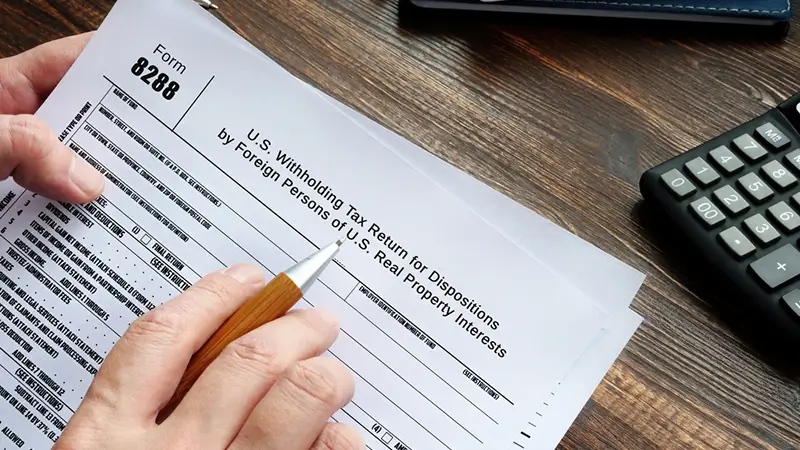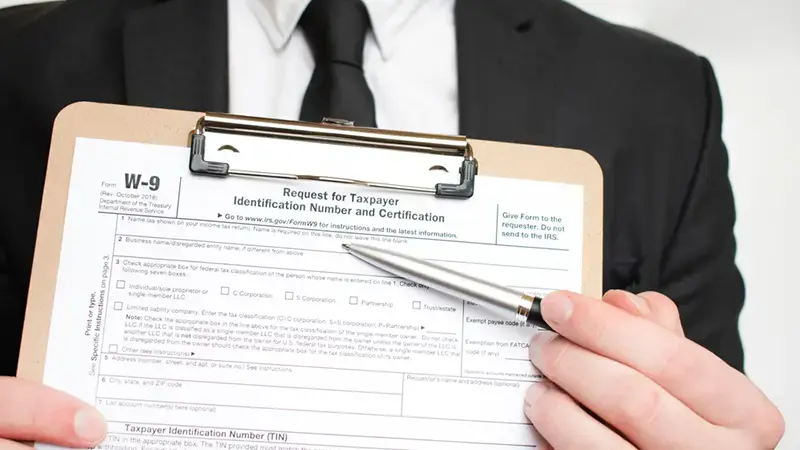What Is FIRPTA Withholding?
The sale or transfer of U.S. real property interests by a foreign individual (the transferor) falls under the Foreign Investment in Real Property Tax...
The W-9 form, also known as the Request for Taxpayer Identification Number and Certification, gathers vital tax information from individuals or businesses that will be receiving payments that exceed a specific threshold. This form is crucial in ensuring accurate tax reporting for both the payer and the payee.
Employers who hire independent contractors (domestic or foreign) must complete a W-9 form for the worker to fill out before work begins. For the IRS, specific criteria determine who is considered an "independent contractor" and therefore must complete a W-9 form. You must complete a W-9 form if:
Should you have doubts about the necessity of completing a W-9 form, it is advisable to consult with an accountant or tax professional. They can assist in determining your correct tax classification and advise on the necessary forms to complete for accurate filing in the respective tax year.
This form is commonly used in a variety of cases where one party requires another person's taxpayer identification number (TIN) to report income to the Internal Revenue Service (IRS) in the United States. Below are some typical situations where Form W-9 is commonly used:
Income is paid to you.
Real estate transactions.
The mortgage interest you paid.
Acquisition or abandonment of secured property.
Cancellation of debt.
Contributions you made to an IRA.
You may be interested in How to plan for a 529 plan for the future
The information on the form is used to generate other tax-related documents related to your employees' employment status. If you have any questions, please consult a tax professional or the IRS.
But quickly, we review how this form should be completed:
According to the IRS, you can trust the beneficiary's exemption statement unless you are aware that the chosen exempt beneficiary code and/or classification is incorrect or inconsistent. In such situations, if you can use Form W-9 to get the payee's TIN, you must consider the payee as nonexempt. If the payee has not provided an exempt payee code, but the chosen classification implies an exemption, you can accept this classification and consider the payee as exempt unless you know that the classification is invalid.
If the payee is not exempt, you are required to backup withhold on reportable payments if the payee does not provide a TIN in the manner required or does not sign the certification, if required.
The following payment types are not subject to backup withholding, as specified for the payees in items 1 through 13:
Interest and dividend payments - Exemption applies to all listed payees except for the one in item 7.
Broker transactions - Exemption applies to payees listed in items 1 through 4, and 6 through 11. C corporations and individuals registered under the Investment Advisers Act of 1940 who regularly act as brokers are also exempt.
Barter exchange transactions and patronage dividends - Only payees listed in items 1 through 4 are exempt.
Payments reported under sections 6041 and 6041A - Payees listed in items 1 through 5 are generally exempt.
However, the following payments made to a corporation and reportable on Form 1099-MISC, Miscellaneous Income, are not exempt from backup withholding.
You may be interested in Tax Planning for Ferraris and Other Ultra-High-End Cars
If you require any assistance with Form W-9 or any other tax-related matters, our experienced team at our South Florida CPA firm is available to provide guidance. Reach out to us today to schedule a consultation and let us help you navigate the complexities of tax compliance and planning. Take the stress out of tax season and allow us to handle it for you with confidence.

The sale or transfer of U.S. real property interests by a foreign individual (the transferor) falls under the Foreign Investment in Real Property Tax...

If so, you might need to file IRS Form 8938 to report those assets.

Form 8288 is the go-to document for reporting and remitting withheld amounts from specific transactions and distributions governed by sections 1445...
